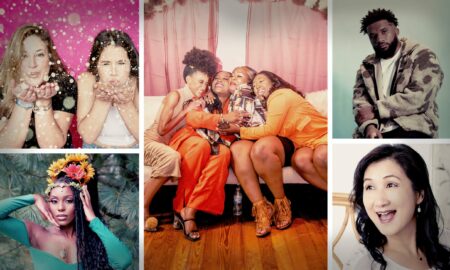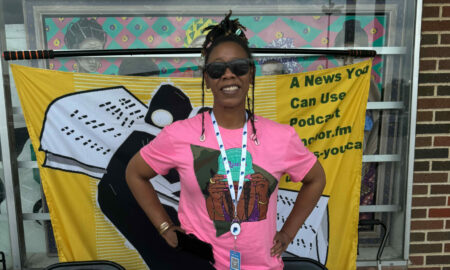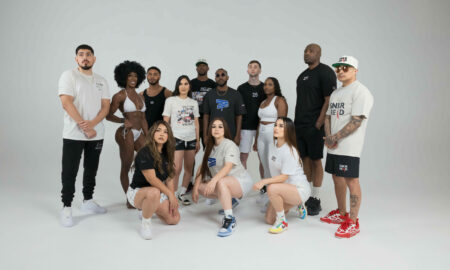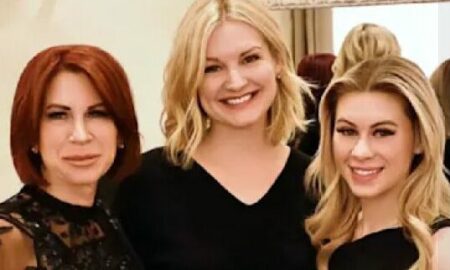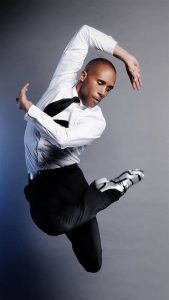
Today we’d like to introduce you to Sean J. Smith.
Sean, let’s start with your story. We’d love to hear how you got started and how the journey has been so far.
At a very young age, growing up in Abbotsford, British Columbia (an hour outside of Vancouver), I spent many hours in adoration of the dance moves of Gregory Hines, Mikhail Baryshnikov and Michael Jackson. I was constantly memorizing choreography and mimicking everything that I saw. I began taking dance classes at the age of six in every form I could get my hands on (tap, ballet, modern, etc.) I moved out on my own at 17 years of age to study Classical Ballet on a more consistent basis in Downtown Vancouver at the Goh Ballet Academy for one year and then for another year with Ballet British Columbia’s Mentor Program. I had every job under the sun to make ends meet from being a receptionist, a paperboy, a mascot and working at Subway.
After many auditions (some successful some not), I moved to Toronto at the age of 19 to pursue a dance career. I landed my first full-time company position with Ballet Creole, an Afro-Caribbean company where I was introduced to the techniques of Martha Graham and Katherine Dunham. Having grown up as the only biracial child in a white family and having trained with predominantly Asian and White students, this was my first experience at nearly 20 years of age, where I was amongst people of color. This was a huge and monumental shift in my life, which lead to feelings of acceptance and relevance both on stage and in life. Prior to that experience, I felt very alone as a person of color without many direct references or people/mentors to turn to who had that particular experience. It was through that season with Ballet Creole that I came in contact with Milton Myers, a former dancer with Alvin Ailey American Dance Theater and legendary teacher of the dance technique of Lester Horton.
I fell in love with the technique and thoroughly enjoyed working with Mr. Myers. I wanted more. I decided that I wanted to give a shot at going back to school to further my training in the Horton technique and continue to expand my horizons as an artist. I applied for a grant from the Canadian government that supports aspiring artists. I was very skeptical of my chances but I indeed received $19,000 from Canada Council for the Arts at the age of 20. I only had a few weeks to pack up all of my things and move to New York City. I studied for three years at The Ailey School, having wonderful opportunities to work with amazing choreographers such as Elisa Monte, Francesca Harper and Robert Battle. The school had approximately 400 students in its Professional Division under the directorship of the late Denise Jefferson, a woman I always admired. After I finished my third year of studies, I was contemplating on what to do next. My time at The Ailey School garnered me an automatic one-year Visa to work at any dance organization that would accept me.
After some unsuccessful auditions, a friend of mine, Michelle Osborne, whom I danced with at Ballet Creole in Toronto, called me and said, “I just started my first season at Dallas Black Dance Theatre and we need a male dancer.” The company had already begun its season so I called and asked if I could fly down and do an in-person audition and the rest is history. I’m currently starting my 11th season with Dallas Black Dance Theatre as a Dancer/Rehearsal Assistant. I have had some wonderful opportunities during my tenure, perhaps most notably performing “Reflections in D” choreographed by Alvin Ailey himself. I hope to continue dancing for many more years as I continue to also teach and choreograph. I hope to serve as an inspiration particularly to young boys and people of color to show them that their wildest dreams can be possible with diligence, hard work and a lot of patience. I have a beautiful older sister, Amber, who is a photographer and a very talented younger brother, Jeremy, who is a motorcycle mechanic. They both live in British Columbia.
We’re always bombarded by how great it is to pursue your passion, etc – but we’ve spoken with enough people to know that it’s not always easy. Overall, would you say things have been easy for you?
1. Financial Difficulty – When I first decided to move out at the age of 17, I had not a dollar to my name. I was working minimum wage at Subway and occasionally teaching or choreographing solos to pay rent and my tuition. A friend of mine, Kirsten Wicklund (she currently dances with Ballet British Columbia), her mother offered me a place to stay rent-free for two months while I figured out my finances. I am in such a great debt to her and many other angels who have helped me along the way.
2. Racial Insecurity – I felt very awkward as a person of color knowing that I looked very different then everyone around me, including my family. There were many expectations of stereotypes assumed of me and I found it very frustrating that it was so confusing and difficult for people to accept me for who I was just because my personality didn’t match what was assumed of me. Yes, I speak in full sentences. Yes, I have good posture. No, I’m not interested in sports. And NO, you can definitely not touch my hair. My experiences at organizations where I was surrounded by people of color in my late teens and early twenties (Ballet Creole, The Ailey School, Dallas Black Dance Theatre, etc.) I was able to learn how to accept myself that understand that I can be myself and a person of color at the same time even if that is contradictory to someone else’s narrow view of the race.
We’d love to hear more about your work.
Dallas Black Dance Theatre was founded in 1976 by Ann Williams, a woman I have great admiration for. DBDT has served as a platform for a diverse group of dancers to create visibility for people of color on stage, starting at a time that saw little opportunity for them. Unfortunately, discrimination still exists even in the arts so I applaud my organization for elevating and showcasing artists of color as it is much needed. The company also strives to present modern and contemporary dance at its highest level, having some of the most legendary choreographers in its repertoire (Alvin Ailey, Talley Beatty, Elisa Monte, among many others) but also strives to push boundaries and providing opportunities for many upcoming choreographers and dancers. In my tenure, I have performed such a vast variety of choreography, which has challenged me and kept my engagement level at its highest. We also engage in community classes, outreach and summer programs that reach countless young boys and girls each year.
So, what’s next? Any big plans?
Long-term planning has never been my strong suit. However, I definitely see myself continuing to dance. For how much longer, I’m not sure. There are so many variables. I have fallen in love with Dallas. I love its diversity of culture, support for the arts, and frankly, affordability compared to other major cities. I have no big changes on the horizon, however, my life has not been short of its surprises.






Image Credit:
Brian Guilliaux (The picture of me in the suite and tie jumping)
Ernest von Rosen (All of the jumping photos with the buildings behind me)
Serkan Zanagar (The photo of me in front of the piano)
Suggest a story: VoyageDallas is built on recommendations from the community; it’s how we uncover hidden gems, so if you or someone you know deserves recognition please let us know here.










